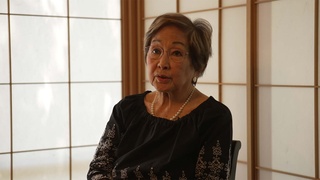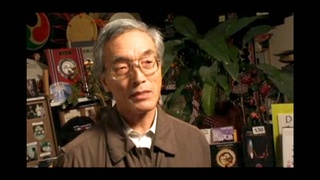Interviews
Japanese American community life
I've always said that I think one of the, I call it a curse in some ways, that my grandmother put on me, was she always used to tell me, and she told me so frequently that everything I did, good or bad in life, would reflect upon the entire Japanese race. And I think I bought that. I was not the sort of questioning person. When my parents or grandparents said something to me I just sort of accepted it. Not that I liked it, but I accepted it. And I think I bought that.
And that was reinforced all through high school, junior high school where I saw the community sort of gather together to protect a particular family in the JA community that might have sinned socially. And they didn't want people to think that this was normal behavior for Japanese Americans, and so they would essentially cover-up. And I remember, especially in high school and in college where sex started to become a little bit more open and, and young women were getting pregnant, you know, out of wedlock, and my God, how that would just like spread through the community. And again, people would draw their wagons and protect the family and all that, but at the same time would be saying very bad things about them, behind your back. So there was a clear double standard.
Date: March 18 & 20, 2003
Location: Washington, US
Interviewer: Alice Ito and Mayumi Tsutakawa
Contributed by: Denshō: The Japanese American Legacy Project.
Explore More Videos

First Exposure to Animation
(b. 1934) Award-winning Disney animation artist who was incarcerated at Topaz during WWII

Japanese community in Mission
(b. 1922) Canadian Nisei who was unable to return to Canada from Japan until 1952

Learning American cooking
(b.1909) Nisei from Washington. Incarcerated at Tule Lake and Minidoka during WWII. Resettled in Chicago after WWII

Parents in Utah
(b. 1939) a businesswoman whose family volunterily moved to Salt Lake City in Utah during the war.

Not bringing shame to family
(1926 - 2012) Scholar and professor of anthropology. Leader in the establishment of ethnic studies as an academic discipline

Role of the Japanese American National Museum
(1926 - 2012) Scholar and professor of anthropology. Leader in the establishment of ethnic studies as an academic discipline

The performing arts not for Nisei
Senshin Buddhist Temple minister and co-founder of Kinnara Taiko.

Food growing up
(b.1948) Nikkei from Southern California living in Japan.

Understanding Sansei taiko (Japanese)
(b.1943) Shin-issei grand master of taiko; founded San Francisco Taiko Dojo in 1968.

Rediscovery of Japanese culture through taiko (Japanese)
Shishimai (Lion dance) and Taiko player with San Francisco Taiko Dojo.

Starting over after the war: denial of all things Japanese
(b. 1923) Nisei from Washington. Resisted draft during WWII.

Her early life in Canada
(b.1912) Japanese Canadian Issei. Immigrated with husband to Canada in 1931

The Japanese society reacts to Nikkei living in Japan (Japanese)
Tsuda College President, researcher of Nikkei history

Taiko as self-expression
Co-founder and creative director of San Jose Taiko

A “principally-based” taiko group in England creating a global taiko community
Co-founder and creative director of San Jose Taiko
